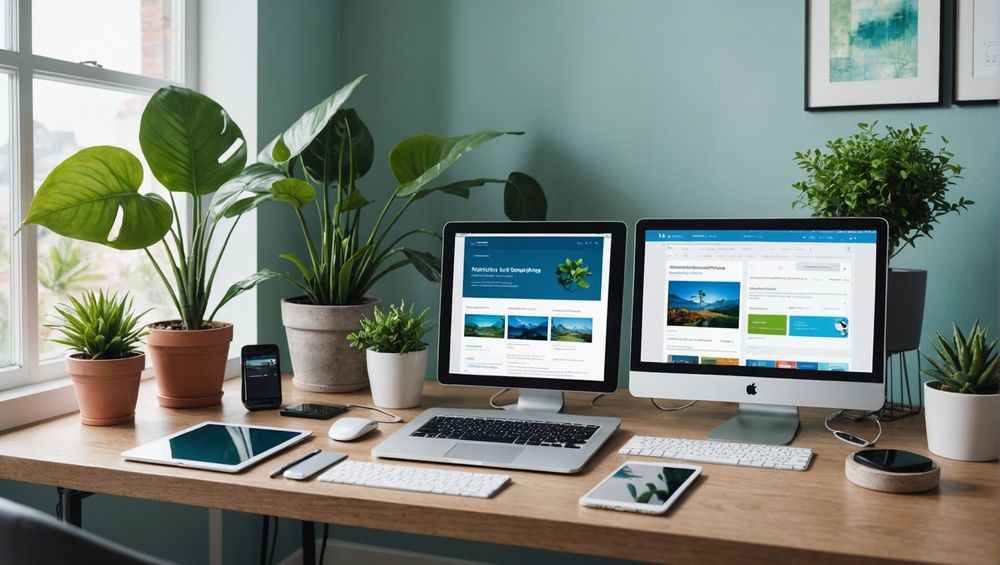Mobile-friendliness is a crucial aspect of modern web design and SEO, meaning a website is optimized for viewing on mobile devices. In this article, we will discuss the five best mobile friendliness tests and what it means to be mobile-friendly.
What Does it Mean to Be Mobile Friendly?

Being mobile-friendly means that a website is optimized to provide an excellent user experience on mobile devices such as smartphones and tablets. This involves responsive design, fast loading times, and easily navigable content. A mobile-friendly site adapts to different screen sizes and ensures that users can access all functionalities without issues.
There are several components to consider for a site to be mobile-friendly:
- Responsive Design: The layout adjusts according to the screen size.
- Fast Loading Times: Quick page load is crucial for retaining mobile users.
- Easy Navigation: Menus and links should be easily clickable.
- Readable Text: Fonts should be legible without requiring zooming in.
Now, let’s take a look at the best mobile-friendliness tests that can help you ensure your site is up to the mark.
1. Google Mobile-Friendly Test
Google’s Mobile-Friendly Test is a straightforward and essential tool for webmasters. By simply inputting your URL, you can instantly see if your site meets Google’s criteria for mobile compatibility. It checks for key factors like viewport settings, whether the text is readable without zooming, and if buttons and links are appropriately spaced.
- Enter your website URL.
- Click the “Test URL” button.
- Review the results and suggestions for improvement.
This tool also provides screenshots of how your page appears on mobile devices, giving you a clear visual of any adjustments needed.
2. Bing Mobile Friendliness Test Tool
Bing offers its own Mobile Friendliness Test Tool, which provides a comprehensive analysis of mobile usability. It looks at aspects such as the viewport configuration, content width, and the legibility of text on mobile screens. The Bing tool also highlights any specific issues and offers insights for improvement.
Using this tool follows similar steps:
- Visit the Bing Webmaster Tools website.
- Navigate to the Mobile Friendliness Test section.
- Enter your URL and run the test.
- Check the detailed report and address the suggested changes.
Being aware of issues through Bing’s perspective can offer additional optimizations for your site.
3. GTmetrix
GTmetrix is an excellent tool for analyzing website performance, including mobile-friendliness. While it is primarily known for speed tests, GTmetrix offers mobile performance insights that are crucial for optimizing mobile user experience. It provides a detailed breakdown of page load times, incorporates Google’s Lighthouse metrics, and suggests actionable improvements.
To use GTmetrix for mobile testing:
- Go to the GTmetrix website.
- Enter your website’s URL.
- Select the “Mobile” option for analysis in the settings.
- Run the test and review the comprehensive report.
This tool is particularly helpful for addressing speed and performance issues that affect mobile users.
4. BrowserStack
BrowserStack is a powerful tool for testing your website’s mobile-friendliness across various devices and browsers. It allows real-time testing on actual devices, providing accurate reports on how your site performs on different mobile platforms. This tool is essential for cross-browser and cross-device compatibility checks.
Steps to use BrowserStack effectively:
- Sign up for a BrowserStack account.
- Navigate to the “Live” testing feature.
- Enter the URL of your website.
- Select the mobile devices and browsers you want to test on.
- Analyze the live performance and user experience.
By testing on real devices, BrowserStack ensures that you catch and fix any issues that could affect mobile users.
5. Responsinator
Responsinator is a straightforward tool that helps you see how your site looks on various popular devices. This tool is perfect for a quick, visual check of your website across different screen sizes and orientations. While it’s not as detailed as other tools, it provides immediate visual feedback on your site’s responsiveness.
To use Responsinator:
- Head over to the Responsinator website.
- Enter your website’s URL in the field provided.
- Review how your website appears on different devices shown on the page.
Responsinator is an excellent tool for designers and developers to quickly check the visual aspects of mobile responsiveness.
Conclusion

Ensuring your website is mobile-friendly is no longer an option, but a necessity in today’s digital landscape. By utilizing various mobile-friendliness tests like Google Mobile-Friendly Test, Bing Mobile Friendliness Test Tool, GTmetrix, BrowserStack, and Responsinator, you can gain comprehensive insights and make necessary adjustments to improve the user experience on mobile devices. These tools help you understand different aspects of mobile optimization, from performance and usability to cross-device compatibility. Stay ahead of the curve by regularly checking and refining your site’s mobile-friendliness.
FAQ

1. What is a mobile-friendly website?
A mobile-friendly website is one that is optimized for viewing and interaction on mobile devices. It involves having a responsive design, fast loading times, clear navigation, and readable text without requiring zooming.
2. Why is mobile-friendliness important for SEO?
Mobile-friendliness is crucial for SEO because search engines like Google prioritize websites that provide a good user experience on mobile devices. A mobile-friendly site ranks higher in search results, leading to better visibility and more traffic.
3. How can I test my website’s mobile-friendliness?
You can test your website’s mobile-friendliness using tools like Google’s Mobile-Friendly Test, Bing Mobile Friendliness Test Tool, GTmetrix, BrowserStack, and Responsinator. These tools provide insights and suggestions for improvement.
4. What are the key features of a mobile-friendly website?
The key features of a mobile-friendly website include responsive design, fast loading times, easy navigation, and readable text. These features ensure a seamless user experience on mobile devices.
5. How often should I check my website’s mobile-friendliness?
It’s a good practice to check your website’s mobile-friendliness regularly, especially after making significant updates or changes. Periodic testing ensures that your site continues to offer an optimal experience for mobile users.









